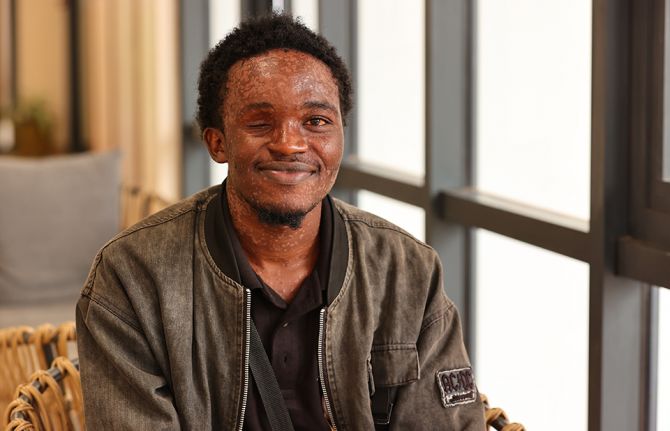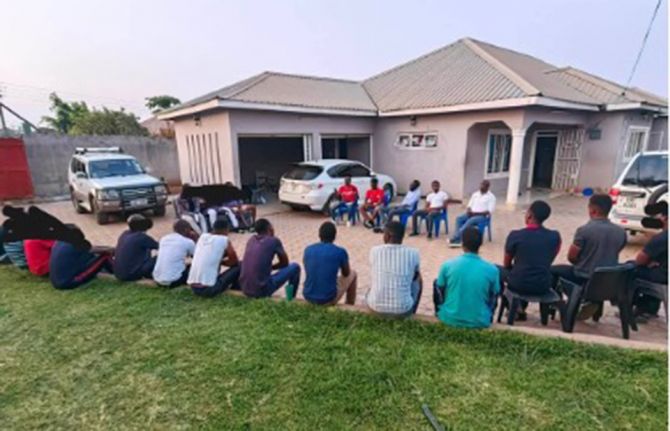
Feature Story
Zambia learns from Kenya’s experience in developing HIV programmes for key populations at higher risk
17 October 2012
17 October 2012 17 October 2012
Zambian delegation with staff from the Kenya Medical Research Institute, A drop-in Centre at Mtwapa, Mombasa.
South to South learning—or the cooperation between low- and middle-income countries—can help countries understand how to respond to HIV, particularly in politically and culturally sensitive areas such as developing programmes for key populations at higher risk of HIV infection.
From 24- 28 September 2012, members of the National AIDS Council of Zambia, with support from the country’s United Nations Joint Team on AIDS, visited to Kenya to learn about their HIV programmes to reach key populations including sex workers, people who inject drugs, men who have sex with men and transgender people.
Despite both countries having restrictive legal environments which criminalise sex work, same sex sexual relations and drug use, Kenya has long recognized its complex HIV epidemic among key populations—which accounts for 33% of new HIV infections. The country put in place a technical working group within the ministry of health to develop programmes that meet the needs of most at risk populations.
“The Modes of Transmission Study done in 2009 clearly showed that we needed interventions for key populations if we were to have a significant impact on the epidemic,” said Dr Orago, Director of the National AIDS Control Council in Kenya.
Zambia’s National AIDS Strategic Framework has recognized the need to gather more information on the epidemic among key populations. Two studies are currently planned to collect the required information. However, HIV programmers recognize that having this information is just one step towards getting key populations the services they require. It will take much longer to address the stigma and discrimination towards these key populations entrenched in Zambia’s society.
Kenya’s political leadership was seen as a key element that has contributed to focus the AIDS response on key populations despite the existence of a non-supportive social environment. In October 2010, for example, the Minister of special programs Esther Murugi opened the national symposium on “Most at Risk Populations” in the country where she recommended more tolerance and acceptance towards men who have sex with men. Also, prominent parliamentarians have long supported the implementation of programmes focusing on people who use drugs in the coast province. “It is clear from what we have seen in Kenya that we need to organize stakeholders and to establish a mechanism that will help us mobilize political support at the highest levels,” said Harold Witola of the Zambian National AIDS Council.
The cornerstone of the response in Kenya is a partnership framework between Government, NGOs and organized key population groups. Kenya has reached a stage in the response where the Government and its partners are implementing evidence-based HIV programmes that focus on the needs of key populations at higher risk. These include purchasing and distributing condoms and water-based lubricants for men who have sex with men and sex workers; developing HIV prevention information materials specifically for key populations; and designing a programme to make disposable syringes available for people who use drugs.
The Modes of Transmission Study done in 2009 clearly showed that we needed interventions for key populations if we were to have a significant impact on the epidemic
Dr Orago, Director of the National AIDS Control Council in Kenya
The Zambian delegation, which included HIV programmers and decision-makers from different Government departments as well as civil society and UN partners, visited a range of programmes to understand how Kenyan service providers work within the national policy and legal framework to provide an effective package of HIV-related activities for key populations.
They visited two peer support programs for people who use drugs, a government clinic in Nairobi that focus on sex workers and men who have sex with men, an NGO clinic for male and female sex workers, and a peer support group for men who have sex with men. They also met with members of the media to identify ways to leverage its advocacy capacity and support.
The team also held community level discussions with groups of men who have sex with men, sex workers (female and male), people who inject drugs and truck drivers. “What strikes me is the excitement and commitment of everyone that we have met, including Government officials, civil society members and the beneficiaries of these services to respond to the public health needs of these important groups in the response to AIDS,” said Dr Mwango as Team Leader for the Zambia Team.
Focusing on the health needs of key populations is an essential human right, fundamental to protecting the public health and critical to reaching the goal of universal access to HIV prevention, treatment, care and support. The Zambia Team left Kenya with a resolve to make a difference for the lives of Zambians who are at the most risk of becoming infected with HIV. “It is not going to be easy, but we have seen in Kenya that it can be done” said Helen Frary, UNAIDS Country Coordinator for Zambia.



